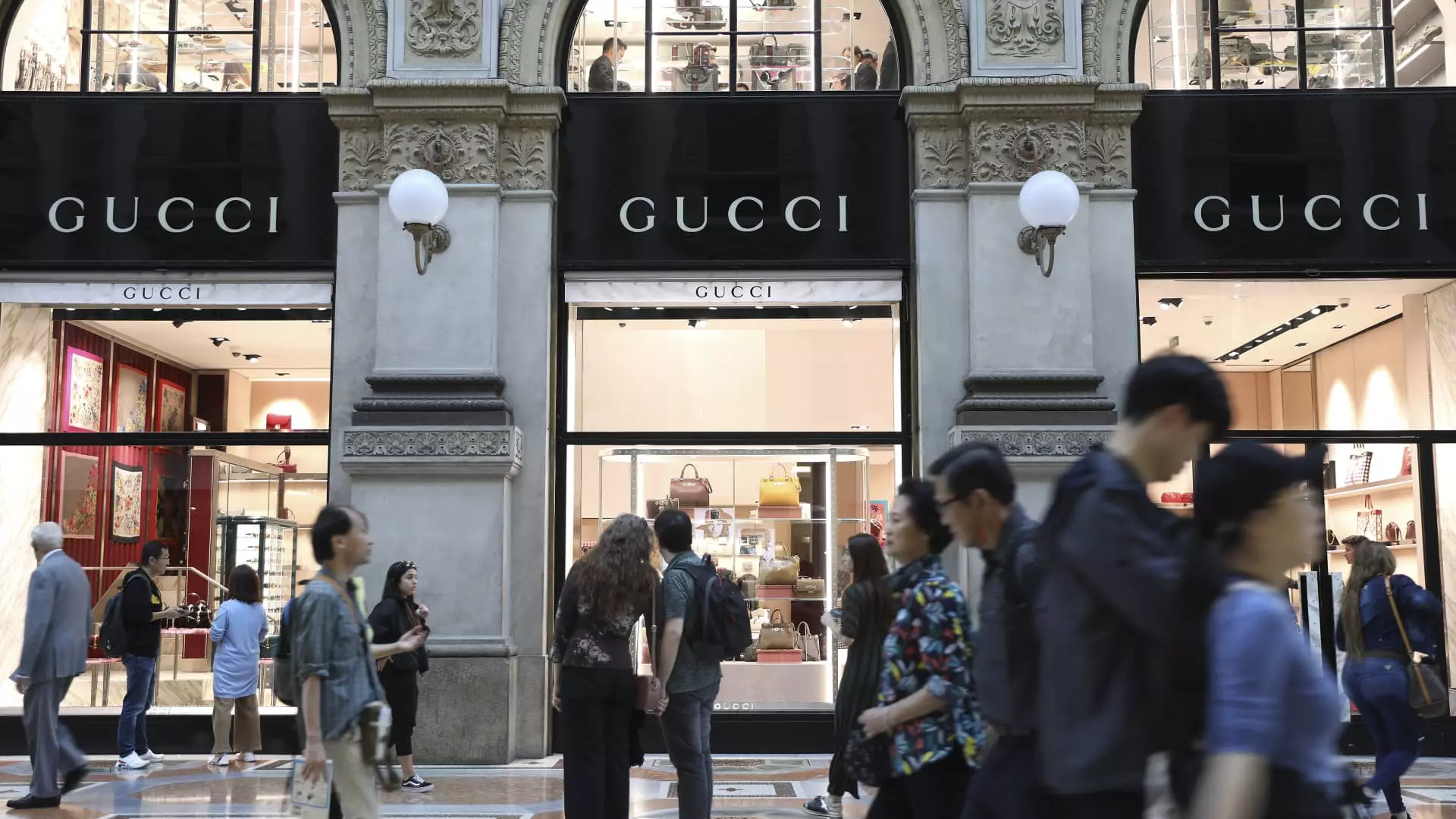The luxury market in Europe has recently shown signs of recovery, suggesting a potential rebound after a tumultuous period. As companies release their earnings, the optimism appears to grow, but lurking challenges, particularly in the form of weak consumer spending in China and looming U.S. tariffs, cast a shadow over this tentative resurgence. In this article, we will delve into the factors influencing the luxury sector’s recent performance, the ongoing uncertainties, and the future outlook for brands aiming to navigate this complex landscape.
Revival Signs Amidst a Challenging Climate
The luxury industry has long been seen as a barometer for global economic health, and this year has been particularly rugged. As Simone Ragazzi from Algebris Investments observed, 2024 was marked as one of the most challenging years for luxury brands, with hopes for a normalization beginning to surface in 2025. The latest quarterly results from illustrious names in the industry provided a welcomed boost, indicating that some of the most emblematic brands, like Hermès, displayed remarkable fourth-quarter performances. Such developments are key, especially as they come against the backdrop of typically sluggish economic conditions.
The positive earnings reports, including record sales from Richemont, the parent company of Cartier, highlight a crucial point: there appears to be a cyclical recovery underway, primarily driven by renewed consumer activity in the U.S. and Europe. However, while these insights can inspire confidence, it is essential to take a comprehensive view of the dynamics at play.
China has historically been a significant driver of luxury goods consumption, and any signs of sluggishness in that market need to be taken seriously. Reports indicate that both L’Oreal and Kering, the latter being home to Gucci, faced declines in Chinese sales during the fourth quarter. The demographic trends in China, coupled with the potential impact of U.S. tariffs, raise crucial questions regarding future growth prospects.
Analysts like Zuzanna Pusz from UBS suggest that increased duties could compel luxury brands to raise their prices further, a move that could alienate price-sensitive consumers and reduce overall sales volume. Brands previously known for their prestige may find themselves in a precarious position—especially those reliant on higher sales volumes from the Chinese market.
The Tariff Threat and Its Implications
The threat of new trade tariffs imposed under the U.S. administration adds an additional layer of complexity for European luxury firms. Trump’s administration had hinted at potentially levying taxes on European imports, aimed at protecting domestic manufacturing but risking significant fallout for luxury brands committed to production in Europe. As Pusz noted, the “Made in Italy” trademark holds significant value and is intrinsically linked to the location of production, making it challenging for brands to adjust to tariff impacts effectively.
The ripple effects of such tariffs could be far-reaching. If Chinese consumers face higher prices due to increased tariffs on European products, their spending habits may shift, intensifying existing market disparities where affluent consumers gravitate toward established luxury brands. Analysts warn that as consumers tighten their belts, discerning buyers will prioritize brands they trust while eschewing those perceived as less innovative or overly expensive.
Adaptation and the Way Forward
As the luxury sector faces these multifaceted challenges, innovation and adaptation become paramount. Some brands have already begun to reassess their pricing strategies and explore new approaches to product development in response to shifting consumer sentiments. The overarching message is clear: brands that can justify their price points through innovation will fare better in this evolving market.
To foster brand loyalty, it will be crucial for luxury companies to recalibrate their strategies. Carole Madjo from Barclays has noted that brands facing criticism for high pricing and a lack of creative innovation are at risk of alienating their customer base. Going forward, it will be essential for these firms to restore consumer confidence through transparent communication, quality assurance, and inventive offerings that resonate with a generation of consumers keen on purchasing less but with a focus on quality.
One of the most captivating questions arising from the current market analysis is the definition of luxury in today’s context. With shifts in consumer behavior and emotions surrounding brand loyalty, there is a need for an evolving dialogue on what it truly means to be a luxury brand. The strength likely lies with those brands that embrace authenticity and offer experiences rather than merely products.
The European luxury sector’s recovery might signify burgeoning hope, but industry players must remain vigilant and adaptable. Challenges from external markets and dynamic consumer behaviors will shape the future landscape, forcing brands to redefine themselves continually. Only those willing to innovate and engage deeply with consumers will ultimately thrive, shaping the new narrative of luxury for years to come.

